25 Apr Where Kolkata’s most powerful man lived, loved, schemed and fought
Warren Hastings’ former home, Belvedere Estate, is the city’s most scenic historical spot
Warren Hastings was India’s first Governor-General and one of the most enigmatic figures of British India. He was a renowned Indophile, respectful of the local culture and fluent in Urdu and Bengali. And yet he was also accused of corruption and impeached by the British parliament, to be acquitted only after a long seven-year battle.
For 12 years, from 1773 to 1785, Hastings as Governor-General was the most influential man in India. He strode this city like a colossus and even today we can see his legacy scattered all around modern-day Kolkata as reminders of where this remarkable man lived, loved, schemed and fought.
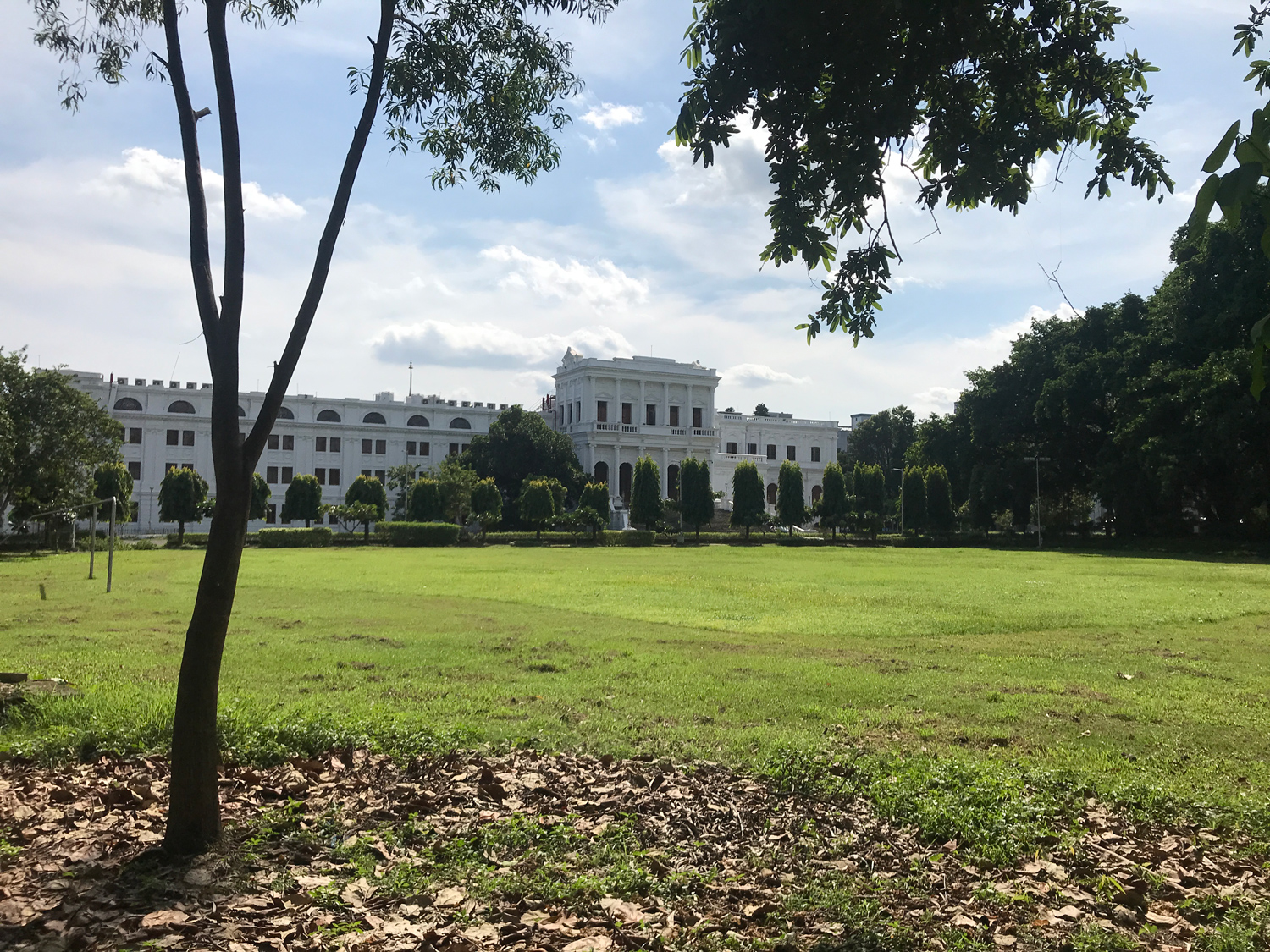
Hastings residence as Governor-General in Kolkata; the imposing Belvedere Estate
Hastings and Belvedere Estate
Alipore, a neighborhood sprinkled with the homes of the rich and famous, was where most of Hastings’ Kolkata properties were. He lived for a long time in the Belvedere Estate, which is now the National Library with its landscaped grounds open to all.
The Belvedere house belonged originally to the much-derided Mir Jafar, who was installed as the nawab of Bengal by the British in return for siding with them at the battle of Plassey to overthrow Siraj ud Daulah. Mir Jafar was always a puppet ruler in the hands of the East India Company. It was not long before his own incompetence and rising instability forced his British masters to replace him with his son-in-law Mir Qasim.
The elderly Mir Jafar was escorted out of his court in Murshidabad and rowed downstream to Kolkata, where he was given a pension to maintain his lifestyle. Jafar owned several properties in Kolkata, and sometime in the 1760s he gifted these Alipore grounds to Warren Hastings. Both Hastings and Jafar had many close dealings when the young Hastings was posted as the Company’s Resident to Murshidabad, and perhaps this was a sign of their intimacy.
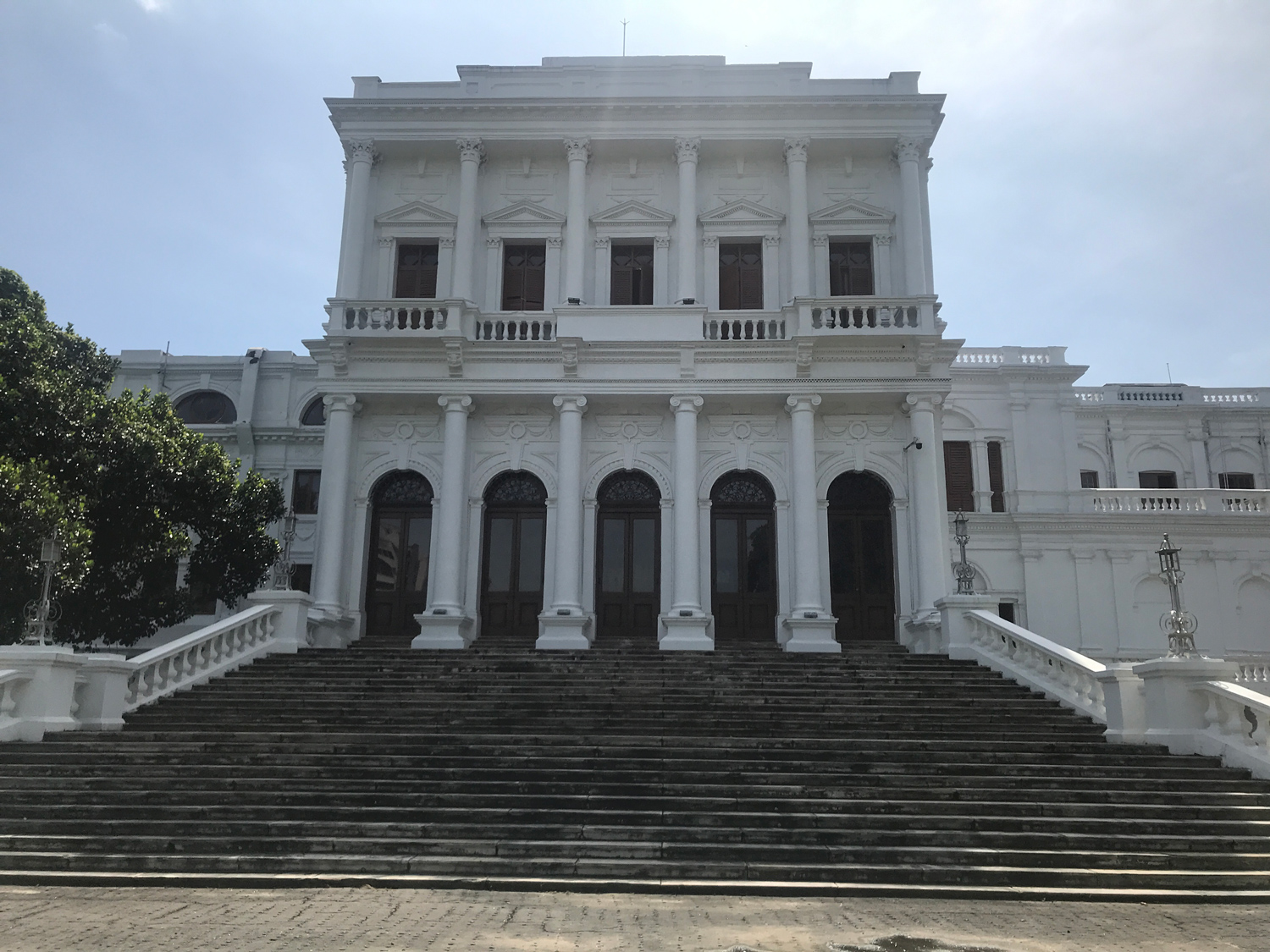 In this house Hastings lived, loved, schemed, fought…
In this house Hastings lived, loved, schemed, fought…Tracking down Hastings in unhurried Belvedere
The day that I visited Belvedere, Kolkata had been washed by unseasonal rains making the lush grounds even more pleasingly green and verdant than usual. The lawns were speckled with marble statues, a legacy from the days of Hastings’ private parties, when the city’s who’s-who would be entertained here. Apparently, there was even a small pond and bridge in these gardens that has since disappeared.
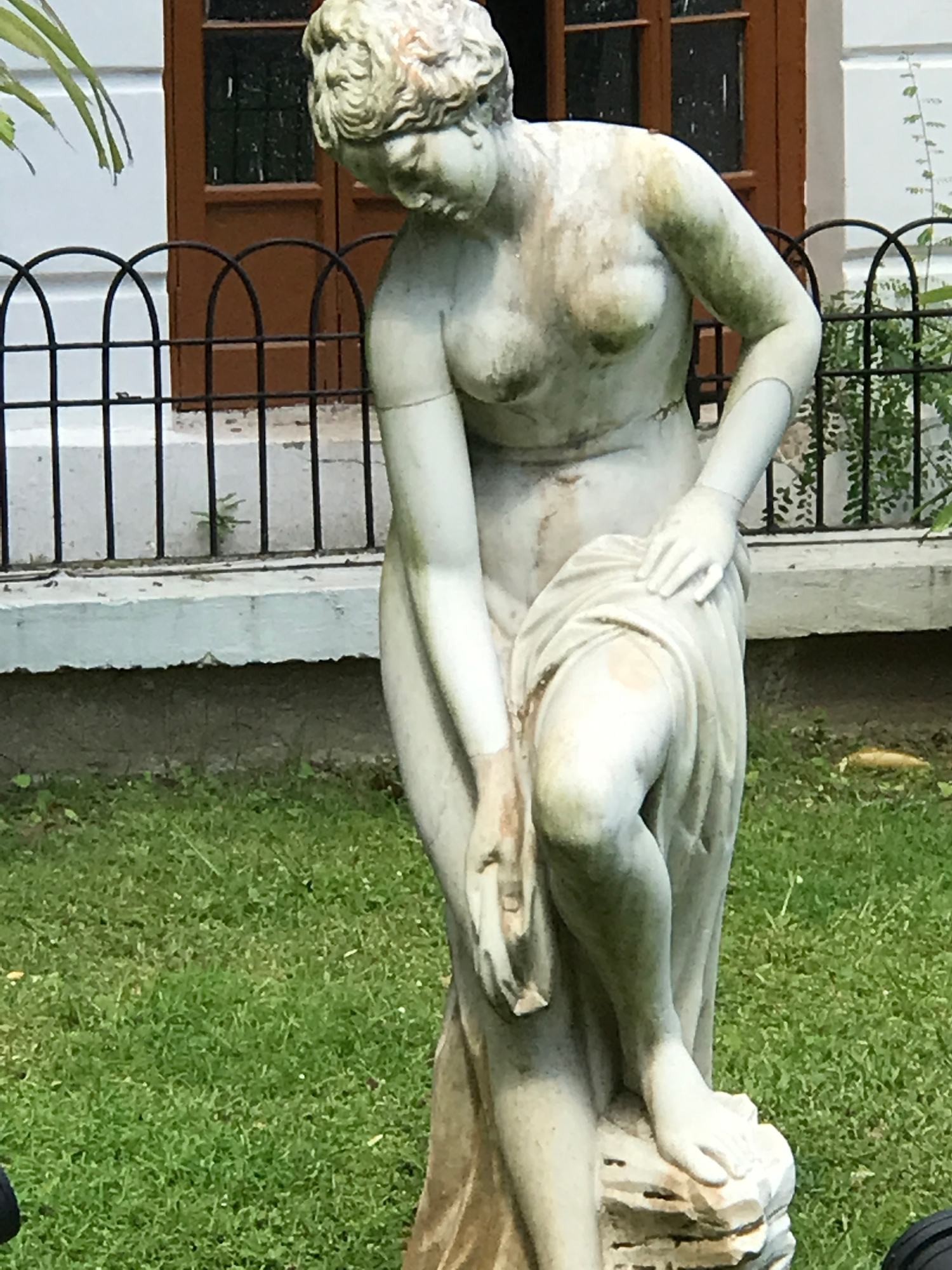 Harking back to the Governor-General’s parties of the past; marble statues dot Belvedere’s lawns
Harking back to the Governor-General’s parties of the past; marble statues dot Belvedere’s lawns
I walked towards the imposing Italian-styled mansion, painted a neat white, and climbed its wide stone stairs as Hastings would have done. There were deep and airy verandahs stretching out on both sides, with the high ceilings letting in a fresh breeze. I stood on the marble floor, looking out over manicured lawns, wondering about Hastings and the life he had lived here.
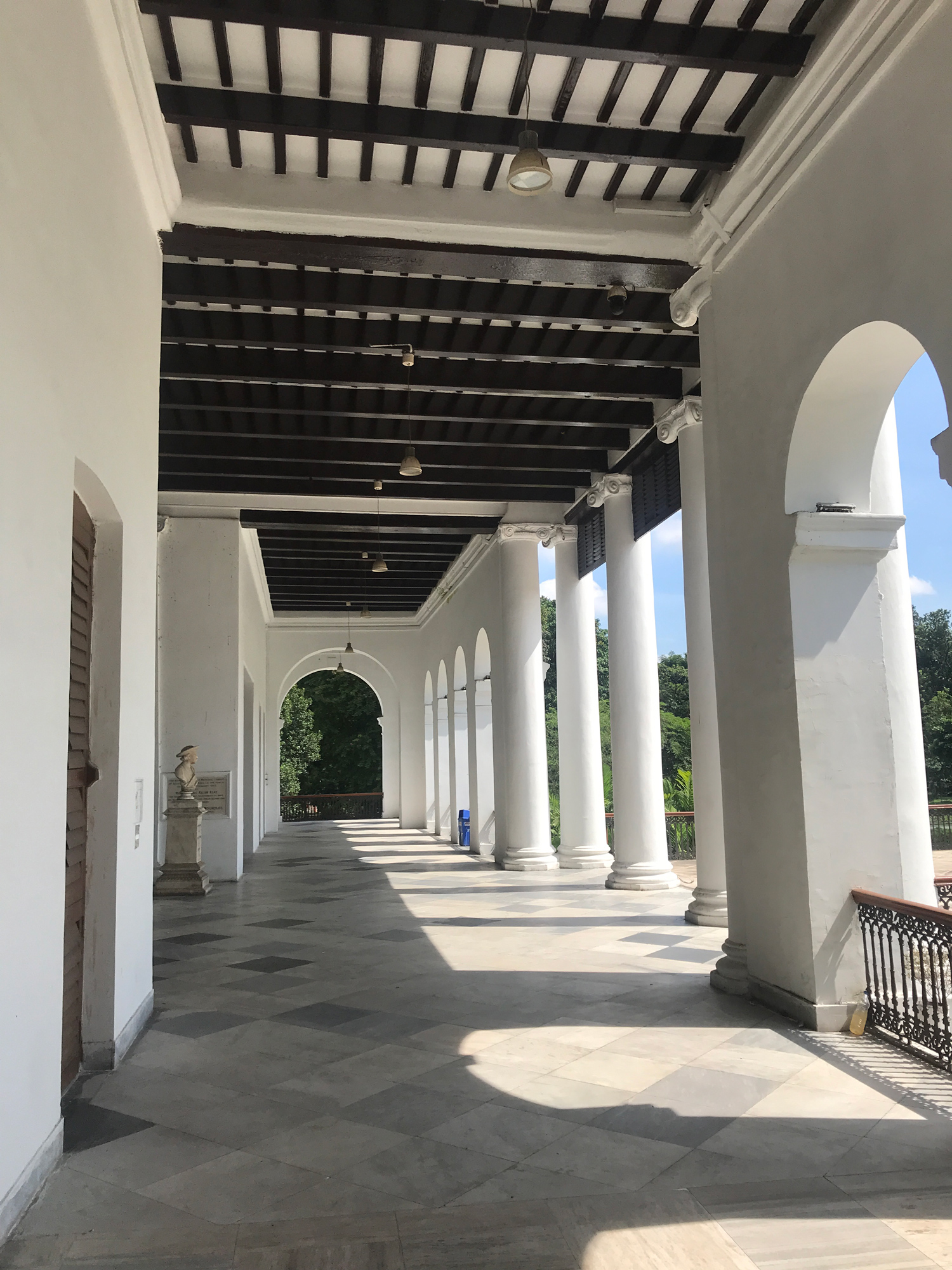 Airy verandahs set deep to let in the breeze and light; Imagine Hastings pacing this with his lady love…
Airy verandahs set deep to let in the breeze and light; Imagine Hastings pacing this with his lady love…Love blossoms at Belvedere for Warren Hastings
Hastings had come to India as a boy of seventeen and spent all of his adult life in this country. When he was 24, he married Mary Buchannan at Cossimbazar, where he was posted at the time. They had two children – a boy and a girl – who both died young and when Mary herself unfortunately died early, Warren was left a young widower.
When Hastings had entered this enormous home in 1772, he was alone. But Belvedere proved lucky for him and romance was soon rekindled in his life. For, on a sea journey back from London to India, he met Marian, the wife of the German Baron Imhoff, and they were immediately drawn to each other. When the ship reached Madras (now Chennai), the Baron and his wife filed for divorce on the grounds of “incompatibility of temper”. It took six years for the divorce to come through in Germany, a period that Hastings and Marian bore with calm and patience, to not cause a scandal.
 An image of the scholarly looking Warren Hastings; a man very much in love at Belvedere Estate
An image of the scholarly looking Warren Hastings; a man very much in love at Belvedere Estate
When Hastings and Marian married in 1777, he was 45 and she 15 years younger. Lavish celebration parties were thrown at this Belvedere House, with the couple living happily in each other’s company.
Whenever Marian left for travel, Hastings penned long protests for her “…I have already torn one sheet because I had half filled it with gloomy complaints. I will not afflict you with more, it is unmanly…I passed the last three days at Allipoor…with an aching heart and head.”*
And, he would rejoice like a teenager at her replies: “…I am now again reading your most delightful letter. I have enclosed it in a case, and I keep it in my private box, which I always carry with me, both for privacy, and for the ready means of looking in to it”*.
I stood in the breezy verandah and imagined Hastings sitting here, gazing out at the lawn, maybe with a glass of gin by his side, pouring out his emotions as he wrote these love letters.
The Nandakumar affair
But there is more to the story of Hastings and Belvedere Estate, beyond this tale of an accomplished man and his lady love.
Hastings is often credited with laying the foundation of the British Empire in India. He was great administrator and began the process of turning the East India Company into an administrative service. In the same year that he moved into Belvedere House, Hastings shifted the capital from Murshidabad to Kolkata. He went on to unify the currency systems, start a postal service and founded the Asiatic Society with the famous scholar William Jones; to deepen research on Indian civilization and “whatever is performed by man and produced by nature”.
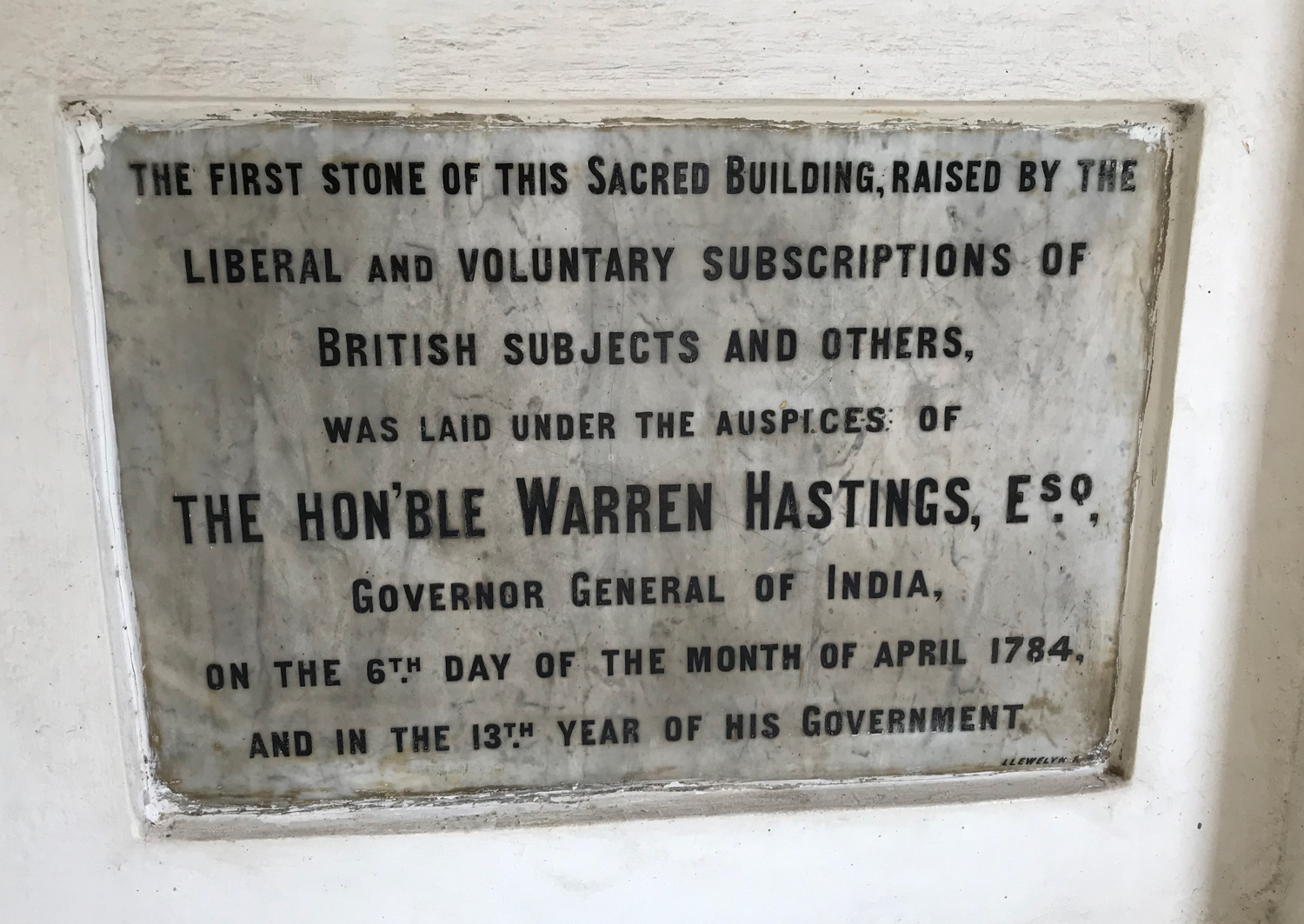 The foundation stone of the historic St Johns Church; another of Hastings’ Kolkata legacies
The foundation stone of the historic St Johns Church; another of Hastings’ Kolkata legacies
While Belvedere was a silent witness to these high achievements, it was also witness to the ill-famed Nandakumar affair.
Nandakumar was a former diwan of the nawab of Bengal who accused Hastings of corruption. Instead of dealing with the charges, Hastings lost no time in blaming Nandakumar of faking the evidence, and together with his old schoolmate and friend, Sir Elijah Impey, who was then the Calcutta Chief Justice, had him tried for forgery and executed. Nandakumar was refused leave to appeal while the trial was conducted from 8 in the morning till late each night, including on a Sunday. In a matter of weeks, the 70-year-old Nandakumar was hanged in Kolkata, while Hastings’s reputation was forever tainted by allegations of judicial murder.
A duel between the two most powerful men in Kolkata
It is time to introduce another character to this story; the scheming, ambitious Phillip Francis
A famous duel was fought on the Belvedere grounds between the two most powerful men in Kolkata. A duel that could have changed the course of India’s history.
When the British government appointed Hastings as Governor-General, they also passed the Regulating Act, attempting to set up checks and balances for curbing the excesses of East India Company. Hastings was Governor- General, but he would govern along with a four-member Supreme Council. The problem was that the Governor-General had no veto power and there was no clarity on responsibilities.
One of the appointed councilors was Phillip Francis, with whom Hastings was constantly at loggerheads. Their bickering started on the first day the councilors landed in Kolkata. They were given a 17-gun salute, which offended Francis who expected a 21-one gun salute. A further snub followed when Hastings received the councilors in informal clothes – “…surely Mr Hastings might have put on a ruffled shirt”, Francis wrote.**
From these frivolous beginnings, things got worse. The pushy Francis desired Hastings’s job and questioned his every action. While Hastings was prickly and sensitive to criticism, believing he knew India and governance better than these recent imports. There was constant squabbling, and the failure to work as a team paralyzed the government.
Things came to a head on August 14, 1780, when Hastings publicly denounced Francis’s conduct as “…void of truth and honour. A severe charge, but temperately and deliberately made”.** A riled-up Francis challenged Hastings to a duel, which was accepted, and a face-off between the top two men in government was fixed for August 17, 1780, to be fought at the edge of Belvedere Estate.
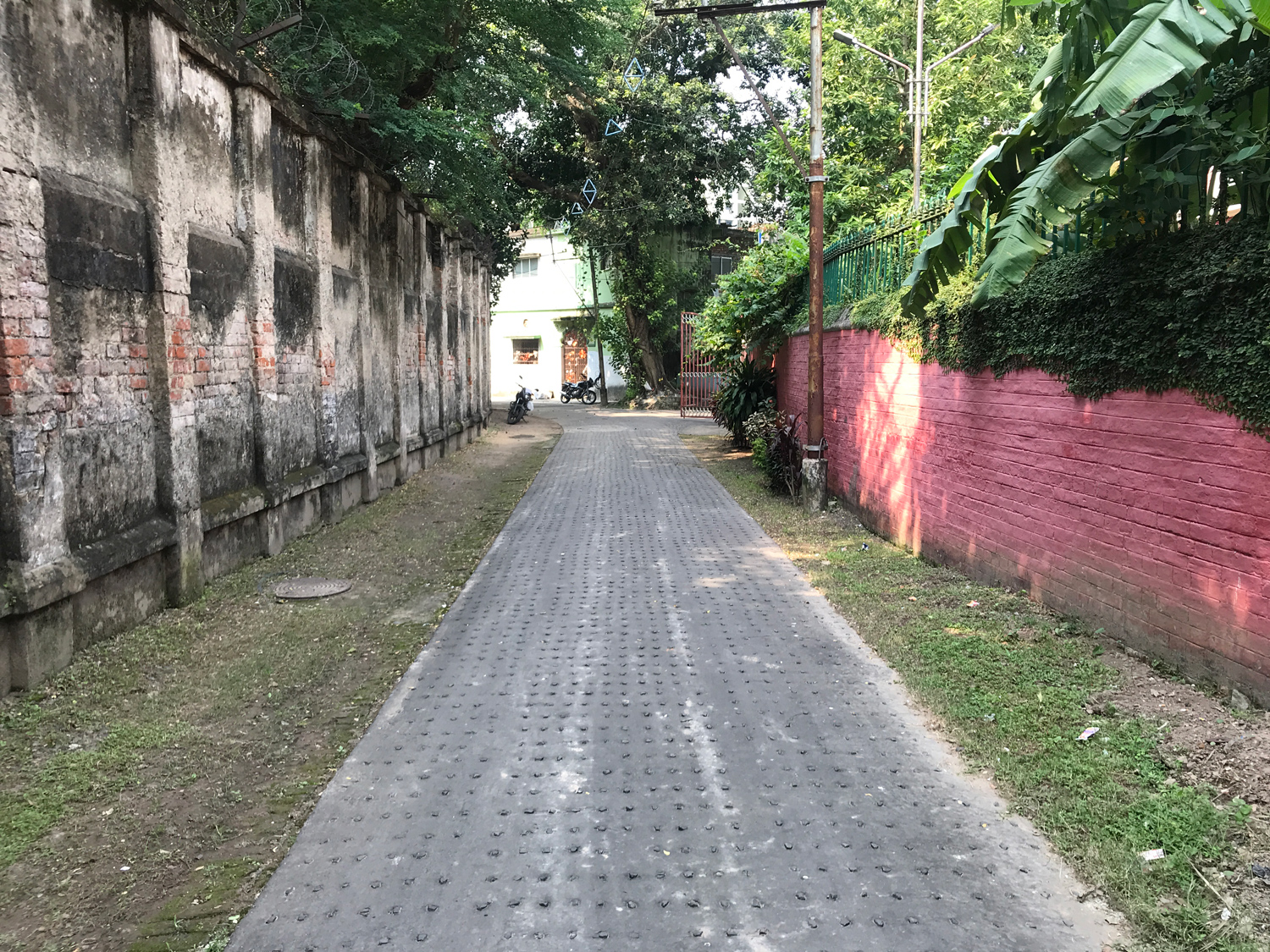 Duel Avenue as it is today; where the two most powerful men in Kolkata squared off
Duel Avenue as it is today; where the two most powerful men in Kolkata squared off
Amazingly, the scene of the duel still exists. To get to the appropriately called Duel Avenue, I drove through the gates of the Kolkata Armed Police ground and towards the red-brick India Metrological Department Office (also called the Alipore Observatory). Here, beside police staff quarters where domestic life was unfolding at a leisurely pace, the two most powerful men in Kolkata had fought more than 200 years ago. The name Duel Avenue has frozen this event for posterity.
They had met here that day at 5.30 in the morning. The two agitated duelists, accompanied by their seconds.
“…Hastings had hardly slept. He spent much of the night composing a farewell letter to his beloved wife Marian, to be delivered in the event of his death…Hastings them slept fitfully on a couch till 4am when his second, Colonel Thomas Deane Pearse, came to collect him in his carriage”. **
It was soon clear that neither of these mighty men knew how to correctly fire a pistol. Their seconds, being military men, loaded the pistols for them. They stood at a distance of 14 paces from each other and fired simultaneously, though it was Hastings shot that found its mark.
“…(Francis) staggered immediately, his face expressed a sensation of being struck, and his limbs shortly but gradually went under him, and he fell saying, but not loudly, “I am dead”**
Francis was not dead. He remained well enough to describe in his words: “I thought that my backbone was broke, and of course that I could not survive it. After the first confusion had subsided, and after I had suffered great inconvenience from being carried to a wrong place, I was at last conveyed to Major Foley’s house on a bed. The surgeon arrived…and cut out the ball”.’*
For the next four months, a hollow truce held between these two before Francis, still smarting from defeat, left India after living in this country for seven years. But that was not the end of their enmity. For, it was Francis who played the lead role in having Hastings impeached by the British parliament within a few years.
* “The private life of Warren Hastings”, page 56, 59, 79
** “The Anarchy. East India Company, Corporate violence, and the pillage of an Empire” page 483, 505, 506, 508, 320
How to get here:
Belvedere Estate is on Belvedere Road in Alipore. Close to the Alipore Zoo is a white-arched gateway with an imperial lion on top, which is the main entrance.
To get to Duel Avenue, turn on to National Library Road and enter the gates of the Kolkata Armed Police complex. Drive past the police club auditorium towards the Metrological Department Office, also called the Alipore Observatory. Duel Avenue is beside it.
Information:
- The National Library is open 9am to 8pm.
- The library is in Bhasha Bhawan, which is on one side of the Estate, adjoining the white-colored Hastings House and grounds.
- Free Entry.
- No toilet facilities (available at Bhasha Bhawan)
- No wheelchair access
- Ample parking space
Sources:
- “The private life of Warren Hastings”. By Sir Charles Lawson. Published by Swan Sonnenschein & Co.
- “The Anarchy. East India Company , Corporate violence, and the pillage of an Empire”. By William Dalrymple. Published by The Bloomsbury
- “Calcutta; the City Revealed”. By Geoffrey Moorhouse. Published by Faber & Faber

